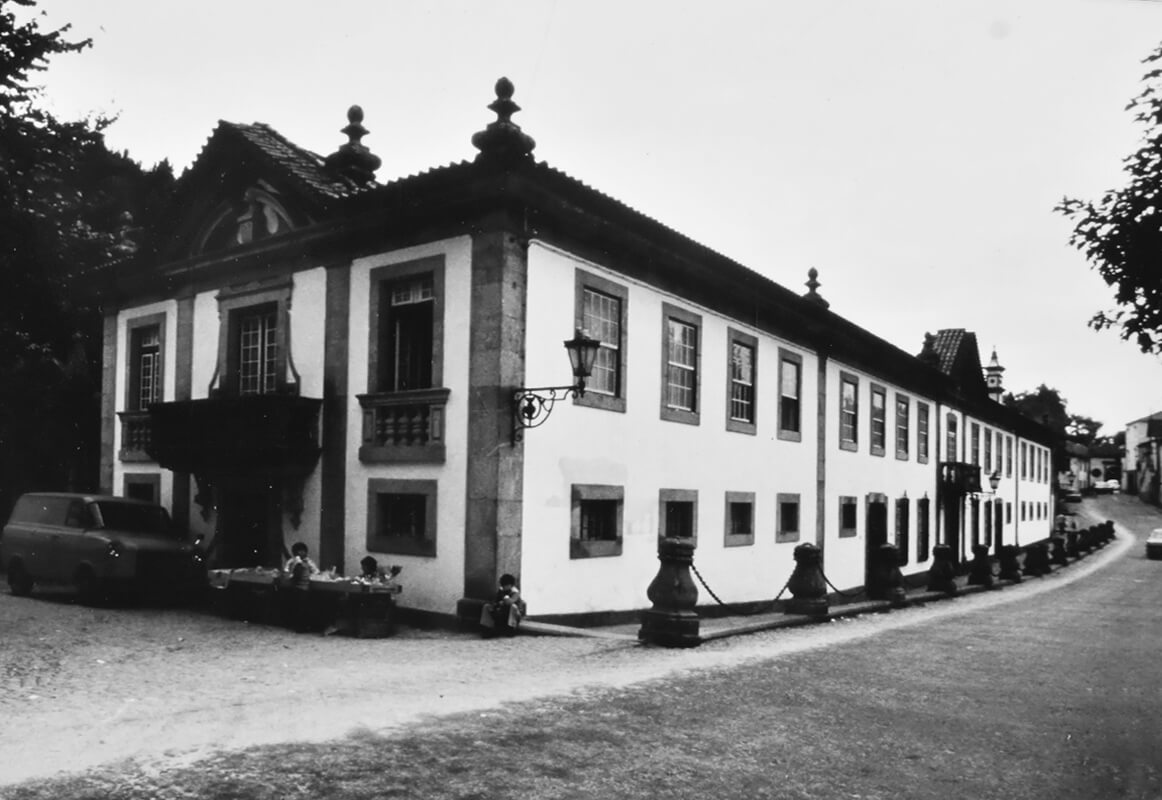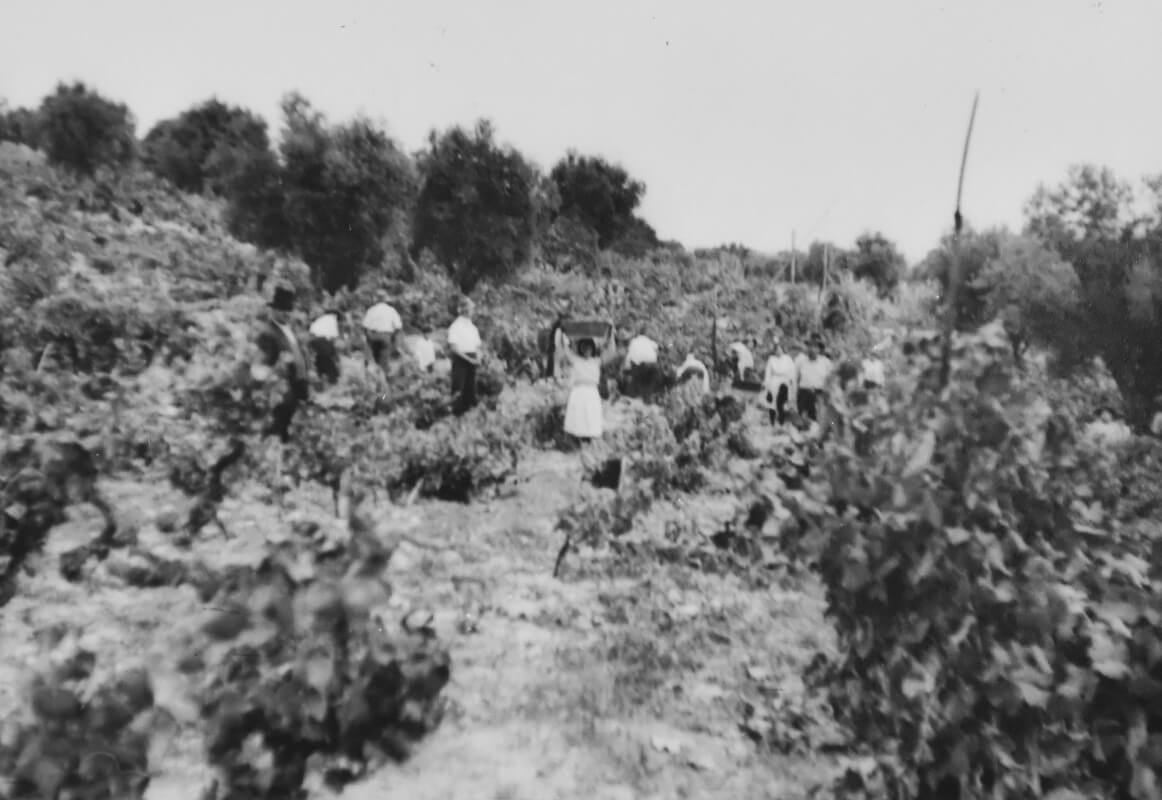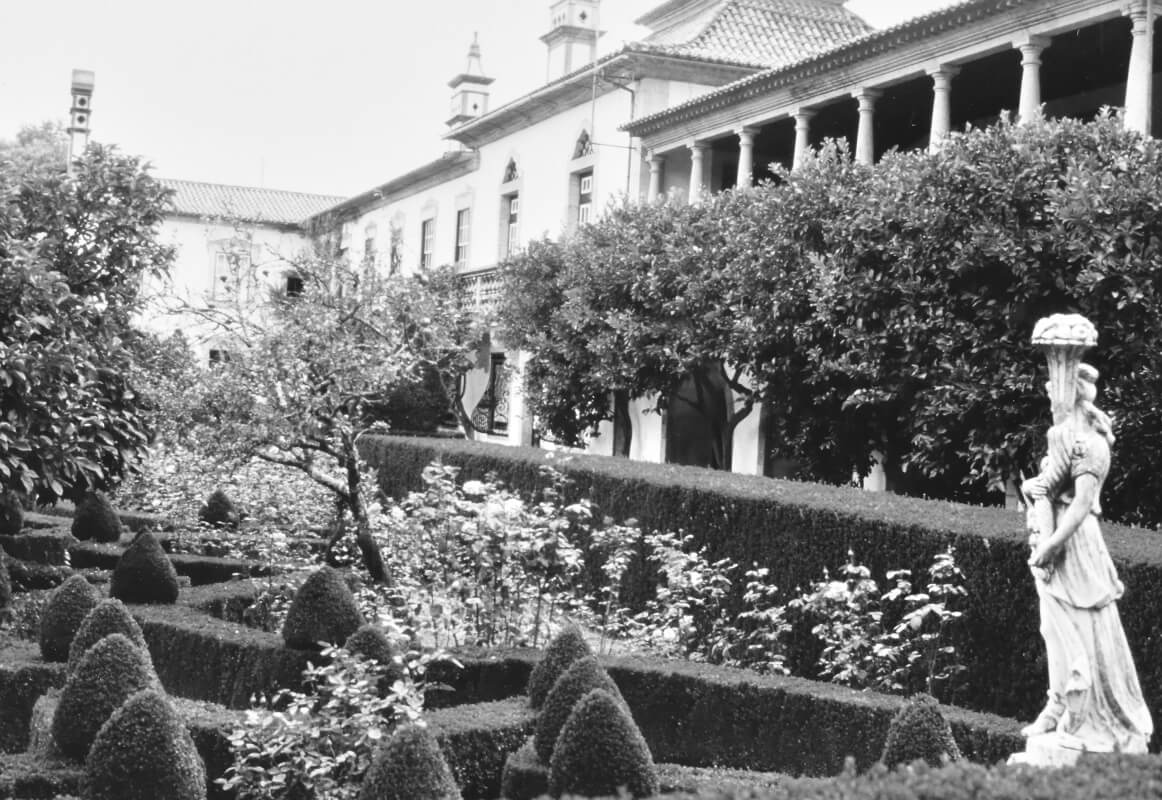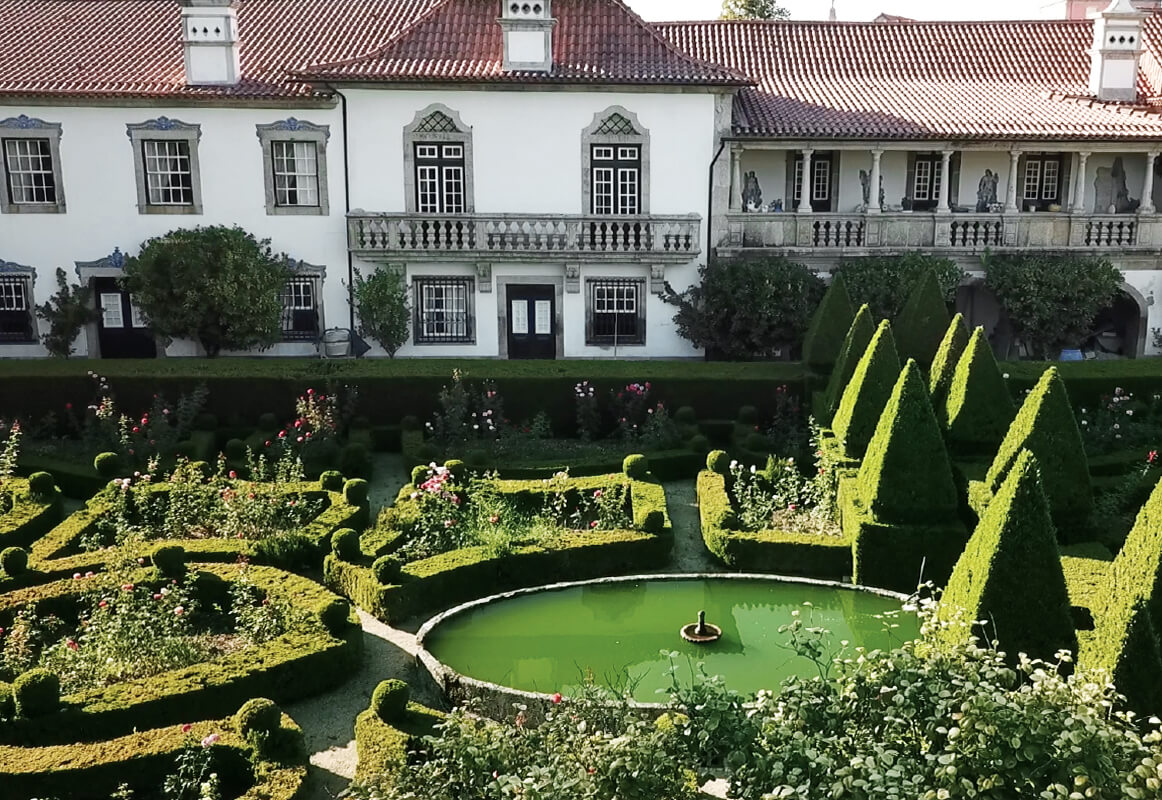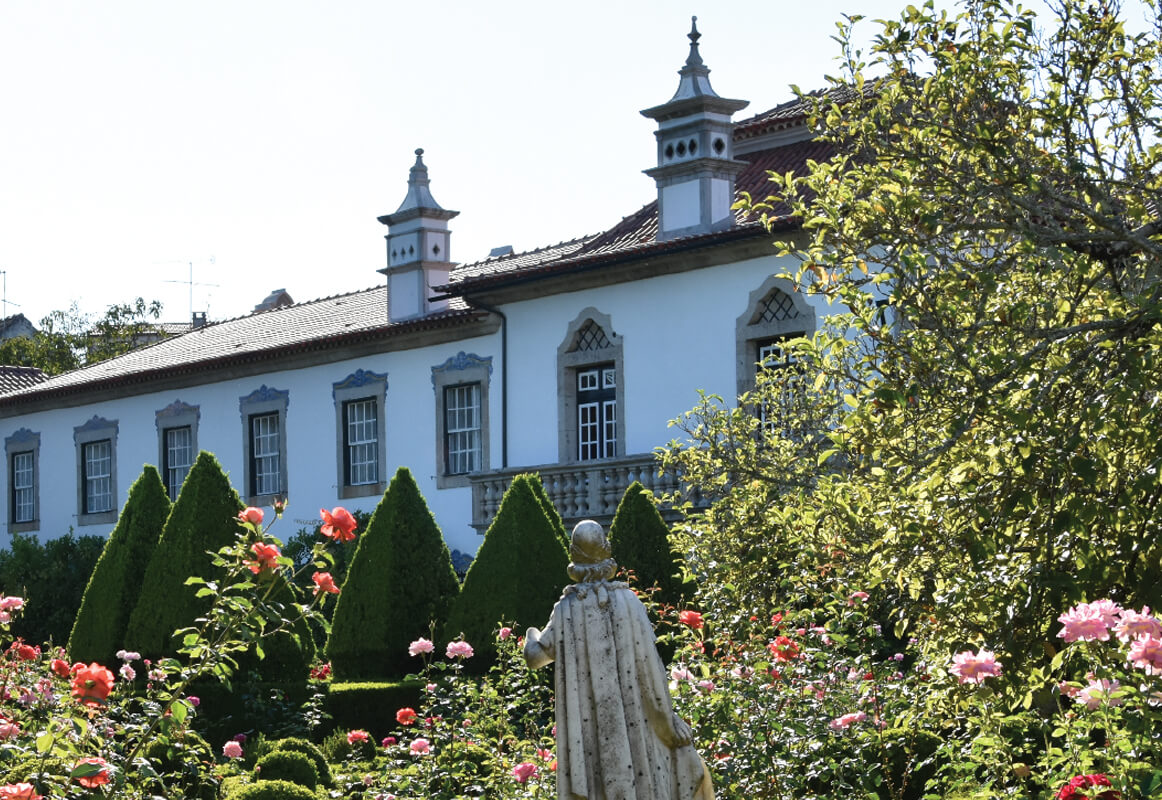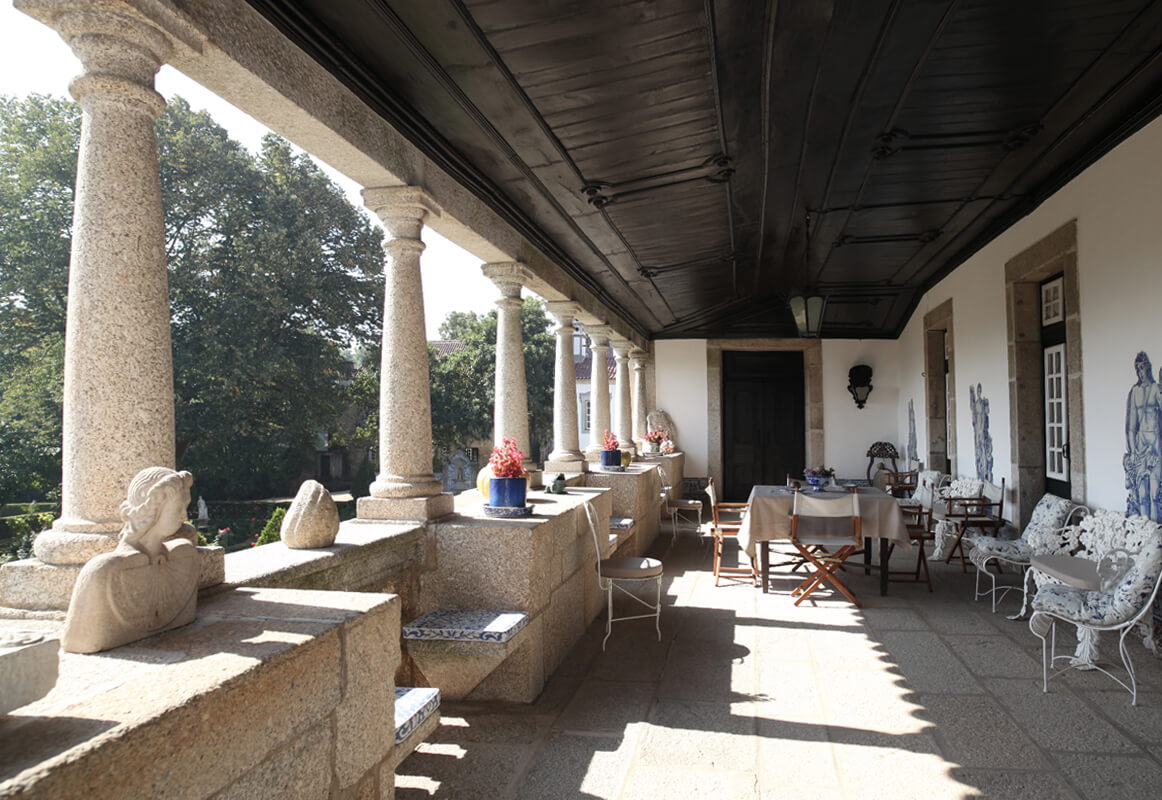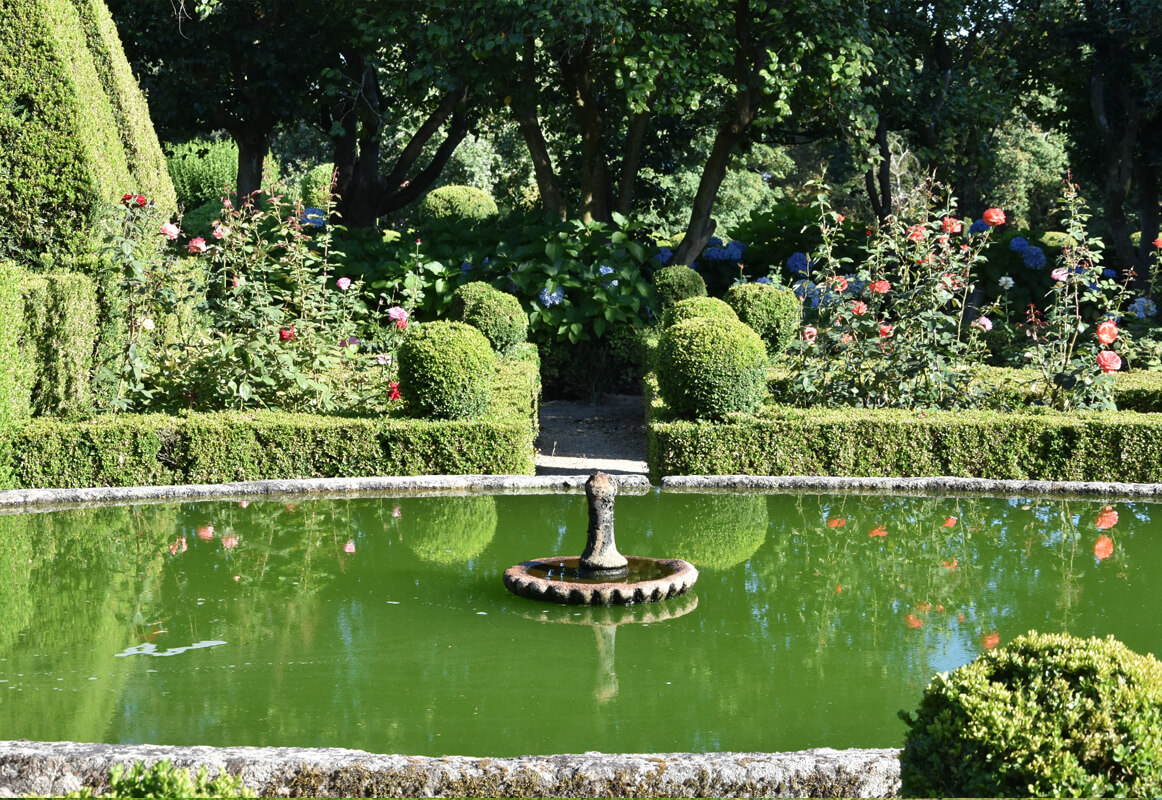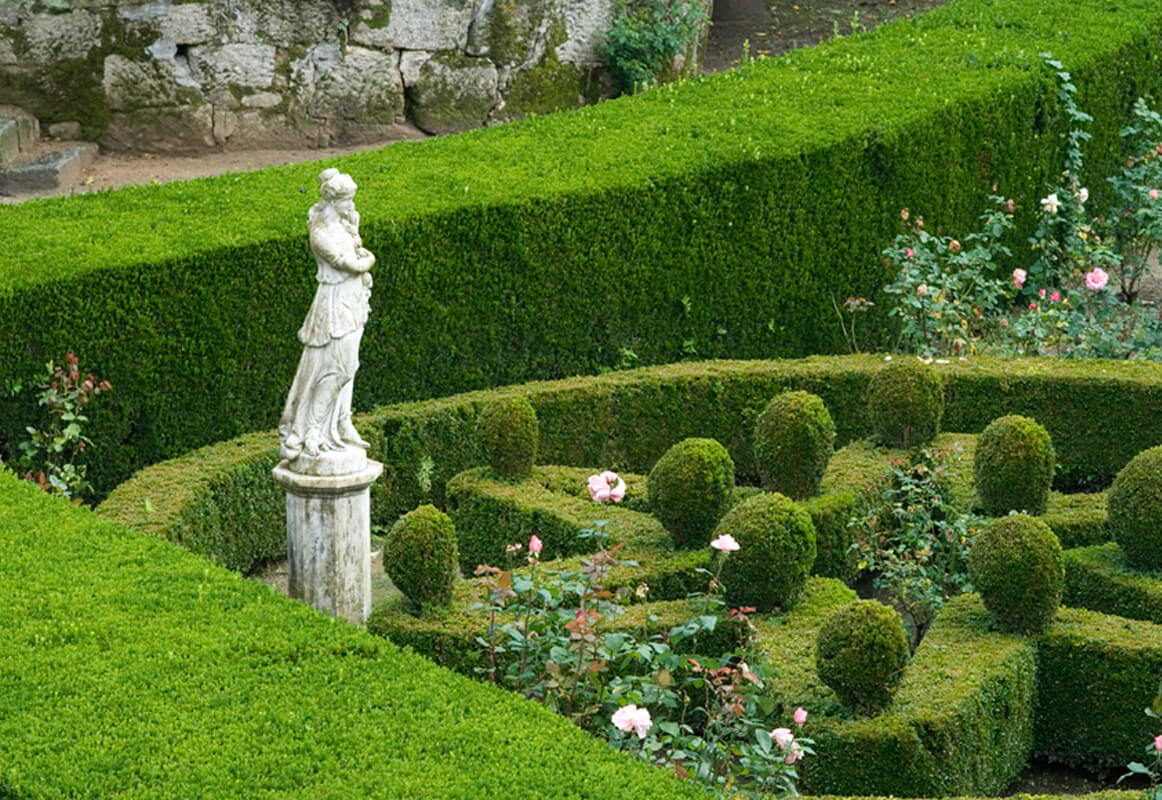Counts of Sabugal (1582)
This title was created, in 1582, by the royal charter of king Felipe I of Portugal, in favour of D. Duarte de Castelo Branco, the meirinho-mor* of the kingdom, a post that his father, D. Afonso de Castelo Branco, had already held during the reign of king João III.
Some time before the Iberian Union, D. Duarte de Castelo Branco had been sent to Madrid, in 1571, charged with negotiating the marriage of king Sebastião (1554-1578) with the princess Maximiliana of Bavaria. Felipe II of Spain did not know, however, that the meirinho-mor had secret instructions to delay the very same negotiation – which obviously ended up with no results, to the Portuguese monarch’s satisfaction.
Duarte de Castelo Branco later accompanied king Sebastião on the tragic expedition to Morocco, being made prisoner in Ksar el-Kebir. He was one of the five noblemen freed by the sheriff of Fez – after receiving a ransom of ten thousand cruzados – to identify the body of king Sebastião on the battlefield and negotiate with Portugal the ransom of the other captives.
After returning to Portugal, he was sent to Rome by Cardinal D. Henrique (1512-1580), who had ascended to the throne on the death of his nephew Sebastião. His task was not an easy one: convincing Pope Gregory XIII to allow the Cardinal-King to renounce his vows so that he could marry and generate an heir, to guarantee the continuity of the Avis dynasty. The pope did not grant permission, which would soon provoke a dynastic crisis.
Duarte de Castelo Branco was later sent by the cardinal-king to Tomar, in order to arrest his rebel nephew, D. António the Prior of Crato. Warned in time, the latter flew to Coimbra, thus avoiding prison.
Having sided with the cause of Felipe II in the process of succession to the Portuguese throne, D. Duarte de Castelo Branco was admitted to the Junta de Defesa created by the five Governors, appointed by Cardinal D. Henrique to manage the kingdom after his death, until a new king had been chosen.
Faced with the popular support of the Prior do Crato, on the death of Henrique D. Duarte he fled to Spain, taking with him the Crown’s money and jewels which, as the royal treasurer, he had in his keeping. His loyalty was rewarded with the title of Count of Sabugal and, in 1593, he was appointed, along with other four noblemen, Governor of the Kingdom of Portugal.
As fate would have it, his firstborn son, and 2nd Count of Sabugal, D. Francisco de Castelo Branco, born from his marriage to D. Catarina de Menezes, the daughter of the alcaide-mor of Santarém, died in 1644, in the battle of Montijo, fighting against the Spaniards in the ranks of king D. João IV.
The title then passed on to his daughter, D. Brites de Menezes, who was later married (in her first union) with D. Nuno de Mascarenhas, lord of the house of Palma (non-renewed title). The firstborn from this marriage was D. João de Mascarenhas de Castelo Branco da Costa, who would later be the 2nd Count of Palma, succeeding his paternal uncle the first Count of Palma, and, by succeeding his mother, Count of Sabugal. From his marriage to D. Joana de Vilhena was born D. Brites de Mascarenhas da Costa Castelo Branco, who later inherited the houses of Sabugal and Palma. By marrying D. Fernando Martins Mascarenhas, 2nd Count of Óbidos, she brought together three illustrious houses: Sabugal, Palma and Óbidos.
Much later, in the 20th century, the representation of these three houses passed on to the 2nd Marquess of Santa Iria, D. José Luis Vasconcellos e Souza, from the house of Castelo Melhor, maternal nephew of the two previous title holders.
At present, the 14th Count of Sabugal is Kristian Luis Austad de Vasconcellos e Souza (1992)
Counts of Palma (1624)
This title was created by king Felipe III of Portugal, on March 30th, 1624, in favour of D. António Mascarenhas Costa (c.1610-1633).
Among this house’s illustrious ancestors stands out, given his importance, D. Pedro de Mascarenhas (1484-1555), a military and a diplomat.
In 1512, he led a Portuguese fleet which was the first to sight some islands in the Indian Ocean. The group of several small archipelagos – including the Mauritius, Réunion, and Rodrigues – later came to be known as the Mascarene (Mascarenhas) Islands, in his honour.
From 1525 to 1526, D. Pedro de Mascarenhas was the military commander of Malacca.
As an ambassador of Portugal, he distinguished himself by the successful mission he conducted at the Holy See. The Portuguese king wanted Pope Paul III to authorize the entry of the Jesuits in Portugal. With his mission accomplished, D. Pedro de Mascarenhas then returned, in 1540, in the company of Francisco Xavier, who was later on was made a saint.
Pedro de Mascarenhas returned to India in 1554 as viceroy, a post he led until his death the following year.
His descendant D. António Mascarenhas Costa, although he died very young, was the morgado** of Palma (Alcácer do Sal), alcaide-mor of Trancoso and Castelo de Vide and commander of Santa Maria da Deveza and of Niza, both in the Order of Christ.
On his death, with no descendants – despite his marriage to D. Maria de Távora, maid of honour to the queen Isabel of Bourbon – the House of Palma was passed on to his brother, D. Nuno Mascarenhas da Costa – whose title was not renewed – who later came to marry the 3rd Countess of Sabugal, D. Brites de Meneses.
From this marriage D. João Mascarenhas de Castelo Branco da Costa (1630-?) was born, who was to become the 2nd Count of Palma, alcaide-mor, and commander of Castelo de Vide. He did not become Count of Sabugal since he died before his mother. He married his cousin D. Joana de Castro. Their daughter, D. Brites Mascarenhas da Costa Castelo Branco Barreto (1657-1709), later inherited her parent’s House and their respective alcaidarias. From her paternal grandmother she inherited the title of Countess of Sabugal and the post of meirinho-mor. Her marriage to D. Fernando Martins Mascarenhas, 2nd Count of Óbidos, brought together the House of Palma with those of Sabugal and Óbidos.
On the death of their son, D. Francisco d’Assis Mascarenhas, (1693-1718), who did not marry, the representation of the House of Palma was passed on to the Houses of Óbidos and Sabugal.
The 6th Count of Palma, D. Francisco d’Assis Mascarenhas (1779-1843), became the 1st Marquess of S. João de Palma, in Brazil. At a later time, on the death without descendants of the 11th Count of Óbidos (12th of Palma and 11th of Sabugal), the representation of these titles were eventually passed on to D. José Luís de Vasconcellos e Souza, 2nd Marquess of Santa Iria (1888-1966) and nephew of the previous title holders.
Marquess of Santa Iria (1833)
This title was created by king Pedro IV, when D. Maria II was still a minor, on April 4th, 1833.
The first Marquess of Santa Iria was the 3rd Count of Alva, D. Luís Roque de Souza Coutinho Monteiro Paim (1783-1850), who was born in Paris, from the second marriage of his father, the diplomat D. Vicente Roque José de Souza Coutinho de Meneses Monteiro Paim. This marriage had been imposed by the Marquess of Pombal. Taking offence after D. Isabel Juliana – daughter and heiress to D. Vicente de Souza Coutinho Monteiro Paim – refused to consummate her forced marriage to his son, the minister of king José imposed on her father a new marriage so that D. Isabel Juliana would be disinherited by the birth of a male child, which actually came to be the case.
Receiving his baptism and with his life in danger shortly after being born, he who was to become the first Marquess of Santa Iria later received the Holy Oils in the Royal Chapel of Versailles. His godfather and godmother were king Louis XVI of France and queen Marie Antoinette.
During the Peninsular War (1807-1814) he was an aide to Beresford, the commander-in-chief of the Portuguese-British army.
Being a liberal, he had to seek exile during the reign of king Miguel (1828-1834). He disembarked among the liberal troops in Mindelo and was present in the siege of Porto. At the end of the civil war he became once more the military governor of the Algarve. He was made a peer of the realm (1826), alcaide-mor of Rio Maior, and 6th morgado of Alva. He was a Grand Cross of the orders of Nª Sª da Conceição de Vila Viçosa, of Ernesto Pio, of Saxony, and of Isabel the Catholic Queen of Spain. He was also Grand Officer of the Légion d’Honneur of France, commander of the Légion of Leopold of Belgium, and Knight of the Torre e Espada.
In May 1800, he married the daughter of his elder sister, D. Maria Ana Vicência de Souza Holstein, sister of the 1st Duke of Palmela. Fate sometimes works to readdress injustice: in the descendance of D. Maria Ana was reunited all that the Marquess of Pombal had intended to take from his mother.
The firstborn son of the 1st Marquesses of Santa Iria became the 4th Count of Alva as well. Later on, the representation of this house fell to the descendants of the third son of the 1st Marquesses of Santa Iria, D. Pedro de Souza Coutinho Monteiro Paim, who also became the 6th Count of Óbidos, 6th Count of Sabugal, and 7th Count of Palma, through his marriage to the heiress of these houses, D. Eugénia Maria de Assis Mascarenhas Castelo Branco Costa e Lancastre.
On the death of the 11th Count of Óbidos (the 11th Count of Sabugal and 12th Count of Palma) the representation of these houses passed on to D. José Luís Vasconcellos e Souza, 2nd Marquess of Santa Iria (1888-1966). On his death, in turn, all these titles were passed on to his son D. José Luís Andrade de Vasconcellos e Souza (1925-2006), who later married D. Maria Teresa Lancastre de Melo, 3rd Countess of Santar and 4th Viscountess of Taveiro.
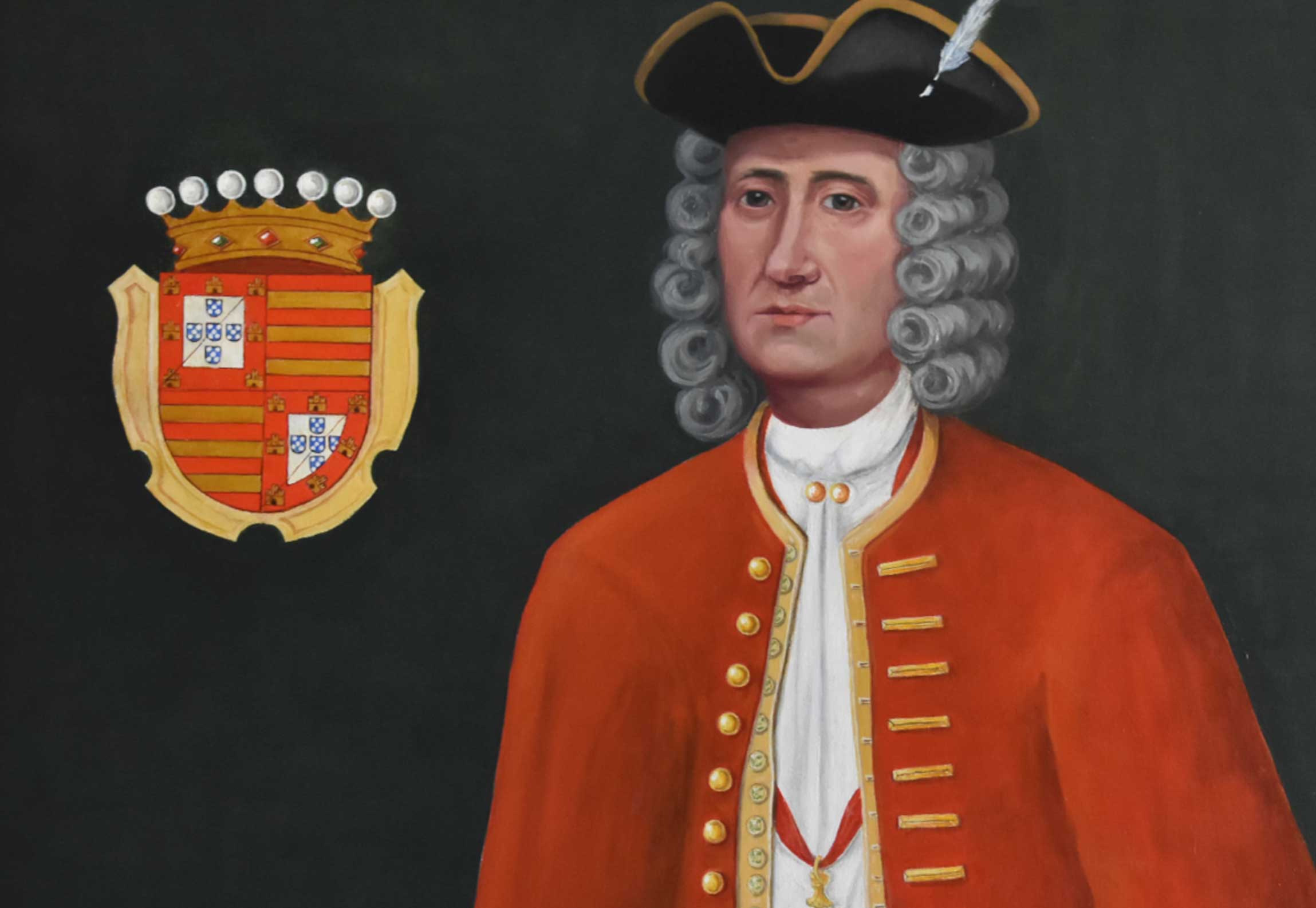
Luis Mascarenhas
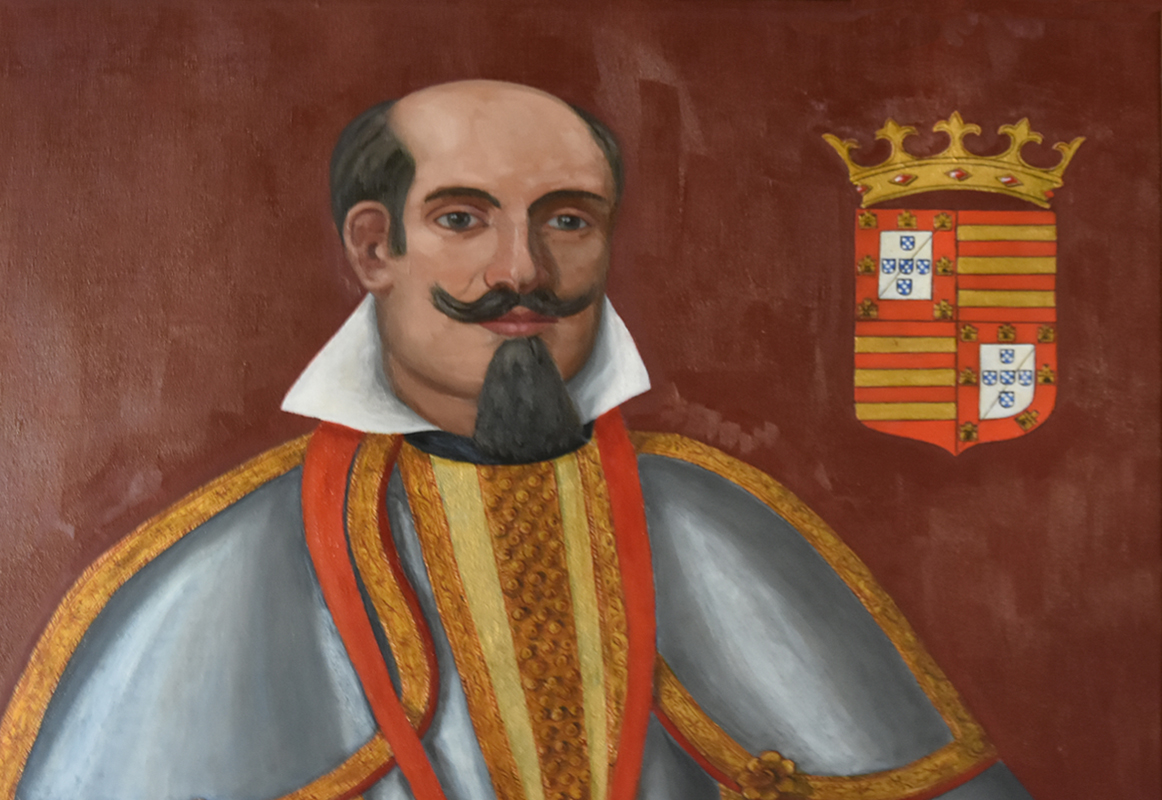
Vasco Mascarenhas
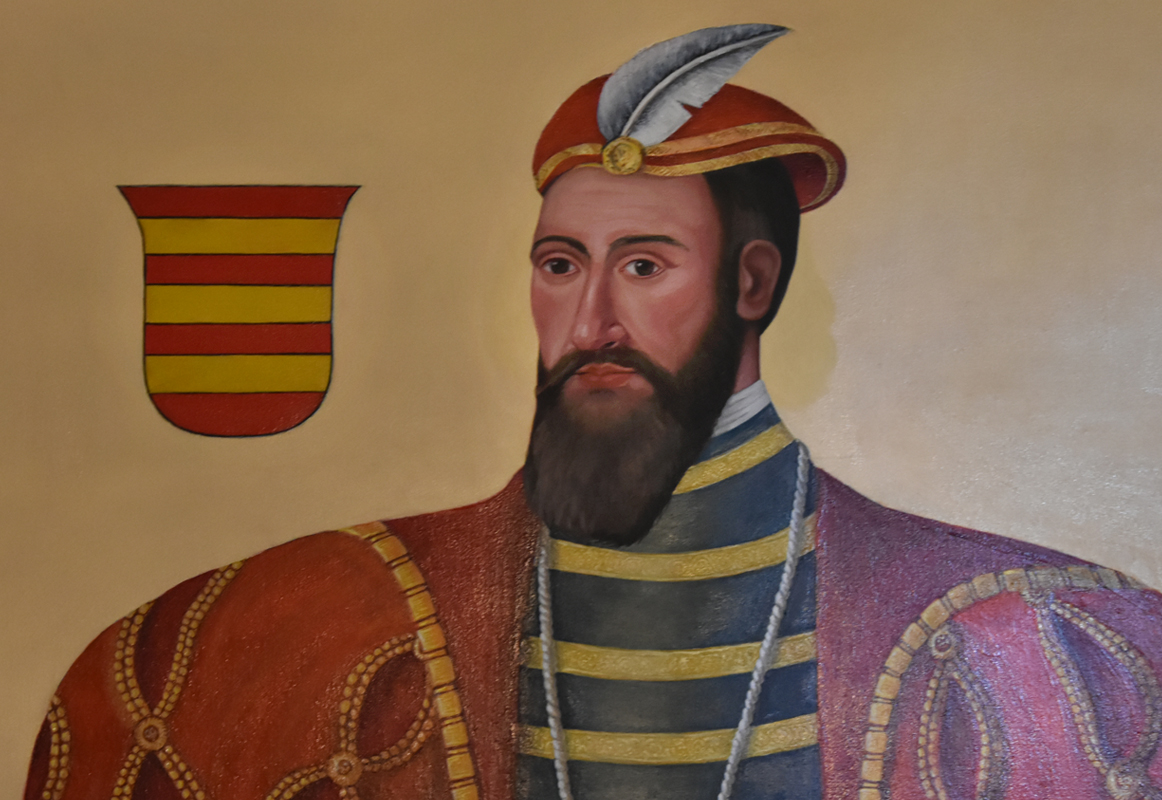
Pedro Mascarenhas
Counts of Óbidos (1636)
Title created by Filipe III of Portugal on December 22nd, 1636.
The 1st Count of Óbidos was D. Vasco Mascarenhas (1605-1678), who received this title from king Filipe III as a reward for services rendered in Flanders and Brazil. He went back to this colony, in 1639, as a general of artillery, temporarily replacing the Count of Torre in the post of Governor of Brazil. In 1640, he supported the new Bragança dynasty, siding with king João IV. Under the new monarch’s orders, he became governor of the Algarve and, in 1643, of the Arms of Alentejo. In 1644 he received the honours of Conde Parente (“Count Kinsman”). But an unsuccessful siege to Badajoz made him lose the king’s favour and landed him in prison.
In 1652, he was appointed Viceroy of India. Nonetheless, his stern actions provoked widespread discontent and put him back in prison. Upon returning to the kingdom, he was not well received. But king Afonso VI appointed him, in 1662, to the State Council. In that same year he was made Viceroy of Brazil. His tenure was a troubled one: not only did he have to face a smallpox epidemic, but in addition he had great difficulty in re-establishing order in the colony´s business, affected by abuse, squandering of the public treasury, and corruption.
In 1667, he was appointed estribeiro-mor (Grand Equerry) to queen D. Maria Francisca Isabel of Savoy, a post he held until his death. He ordered the construction, in Alcântara, of a palace overlooking the Tagus river which nowadays houses the headquarters of the Portuguese Red Cross.
Later on, in 1749, king João V granted D. Manuel Assis de Mascarenhas, 3rd Count of Óbidos, the hereditary honour of Parente (´Kinsman’) of the Royal House. That did not avert his incarceration, in 1760, in the Junqueira prison (where he eventually died), after he was falsely accused of involvement in the attempt against the life of king José I.
The 5th Count of Óbidos (and 5th Count of Palma and of Sabugal) received the honour of Parente in 1823, from king João VI. Besides being the kingdom’s meirinho-mor, he was a highly cultivated man, who spoke several languages and stood out thanks to his intelligence in the literary salons hosted by the Marquess of Alorna.
During the first French Invasion, he was among the Portuguese noblemen who were forced to join the Portuguese Legion to fight under the Napoleonic Eagle. He was even decorated by Napoleon for his bravery on the battlefield. On his return to Portugal, and due to his service in France, he was banished to Açores.
Being a liberal, he went into exile during the brief reign of king Miguel (1828-1834). The government in exile appointed him Minister of Portugal in the Brazilian Court. On his return to Portugal, he kept his distance from politics and dedicated himself to the literature.
Several circumstances caused the line of representation of this house (Óbidos, Sabugal, Palma and Alva) to suffer detours a number of times. Representation ended up falling to the 2nd Marquess of Santa Iria (1888-1966), maternal nephew of the two previous title holders. Nowadays, the title of 13th Count of Óbidos belongs to the firstborn son of José Luis de Vasconcellos e Souza (1959-) (12th Count of Óbidos, 4th Marquess of Santa Iria, 13th Count of Sabugal, and 6th Count of Alva), Kristian Luís Austad de Vasconcellos e Souza.
Counts of Alva (1729)
Title created on April 29th, 1729, by decree of king João V.
The first Count of Alva was D. João de Souza e Ataíde (1663-1740), the son of the 6th Count of Atouguia. This eminent military man belonged to the War Council. He was the military governor of Minho and Alentejo, and distinguished himself in the Spanish War of Succession, having accompanied the Marquess of Minas in the audacious Madrid campaign. Despite his marriage to D. Constança Luisa Monteiro Paim, holder of the morgado of Alva, he had no descendants. The morgadio was passed on to the countess’s sister, D. Maria Antónia de S. Boaventura de Meneses Paim, who married a son of the 11th Count of Redondo, D. Rodrigo de Souza Coutinho. They were the parents of D. Vicente Roque José de Souza Coutinho Monteiro Paim, who in turn had a daughter from his first marriage, D. Isabel Juliana de Souza Coutinho Monteiro Paim. Heiress to an important morgadio, she was eyed by the Marques of Pombal as a possible spouse for his second son, José Francisco de Carvalho Daun. In love with D. Alexandre de Souza Holstein, however, D. Isabel Juliana did not accept the idea. She was forced to marry but managed to avoid consummation, so that the marriage was eventually annulled. As a vengeance, she was locked away in a convent, where she stayed for many years, until the fall of the Marquess of Pombal. Her sacrifice paid off, nevertheless, since she later married D. Alexandre de Souza Holstein, after her release.
Vicente Roque José de Souza Coutinho Monteiro Paim was married, for the second time, with D. Luisa Inês Isabel de Montboissier Beaufort de Canniliac, and had a son, D. Luís Roque de Souza Coutinho Monteiro Paim (1783-1850), who later became the 3rd Count of Alva and the 1st Marquess of Santa Iria.
The 2nd Count of Alva, D. Luís de Mascarenhas (c.1685-1756), was the fourth child of the 2nd Marquesses of Fronteira and, through his mother – whose parents were the 7th Count of Atouguia -, he was a nephew of the 1st Count of Alva.
Although he started out as a clergyman (he was the Abbot of S. Martinho de Dume), he obtained a papal dispensation allowing him to take up a military career. In 1739 he was appointed Governor of the Captaincy of S. Paulo. In 1754, he was made Viceroy of India. He left on April 1st of that year, having arrived in Goa in September. But his rule was an unfortunate one. He began by granting freedom of cult to the inhabitants of territories conquered by his predecessors, in order to help pacification. The government in Lisbon, however, was not pleased. A falling out with the potentate of Bounsuló, which failed to meet an agreement, led the Viceroy to declare war against the vote of the Council of State. He started this war with insufficient resources and ended up dying as he marched on Pondá. It was never clarified whether he was shot by the Maratas or by his own soldiers, who in the meantime had rebelled, fearing his punishment.
The 3rd Count of Alva was the aforementioned D. Luís Roque de Souza Coutinho Monteiro Paim, grandnephew of the 2nd Counts.
Subsequently, due to the absence of living descendants of the 4th Count of Alva, the representation of this title, along with that of Marquess of Santa Iria, fell to D. Pedro de Souza, brother of the 4th Count of Alva who, by marriage, was also the 6th Count of Óbidos, 4th Count of Sabugal, and 7th Count of Palma.
Viscounts of Taveiro
This title was granted by queen Maria II, for two lives, by her decree of 26 November 1851.
Maria Rosa de Figueiredo da Cunha e Melo Lacerda e Lemos (1832-1882) was the 1st Viscountess of Taveiro, and the 7th lady of the eponymous morgado. On November 26th, 1849 she married José de Melo Pais do Amaral de Souza Pereira de Vasconcellos e Meneses, 7th lord of the morgado of Santar and Corga, and 4th of that of S. João de Lourosa. The latter, who received permission to use his wife’s title, was the son of José de Melo Pais do Amaral, a nobleman of the Royal House and capitão-mor of the municipalities of Senhorim and Canas de Senhorim.
The 2nd Viscount of Taveiro, José Pedro Paulo de Melo de Figueiredo Pais do Amaral da Cunha Eça Abreu e Souza de Meneses Pereira de Lacerda Lemos e Vasconcellos, later became the 1st Count of Santar.
By permission of king Manuel II, already in exile, the 2nd Viscount’s son, Pedro Paulo António de Melo de Figueiredo Pais do Amaral (1905-1947), was able to continue using the title, which was later passed on to his daughter D. Maria Teresa de Lancastre de Melo, representative of the titles of Santar and Taveiro and, by marriage, Countess of Palma.
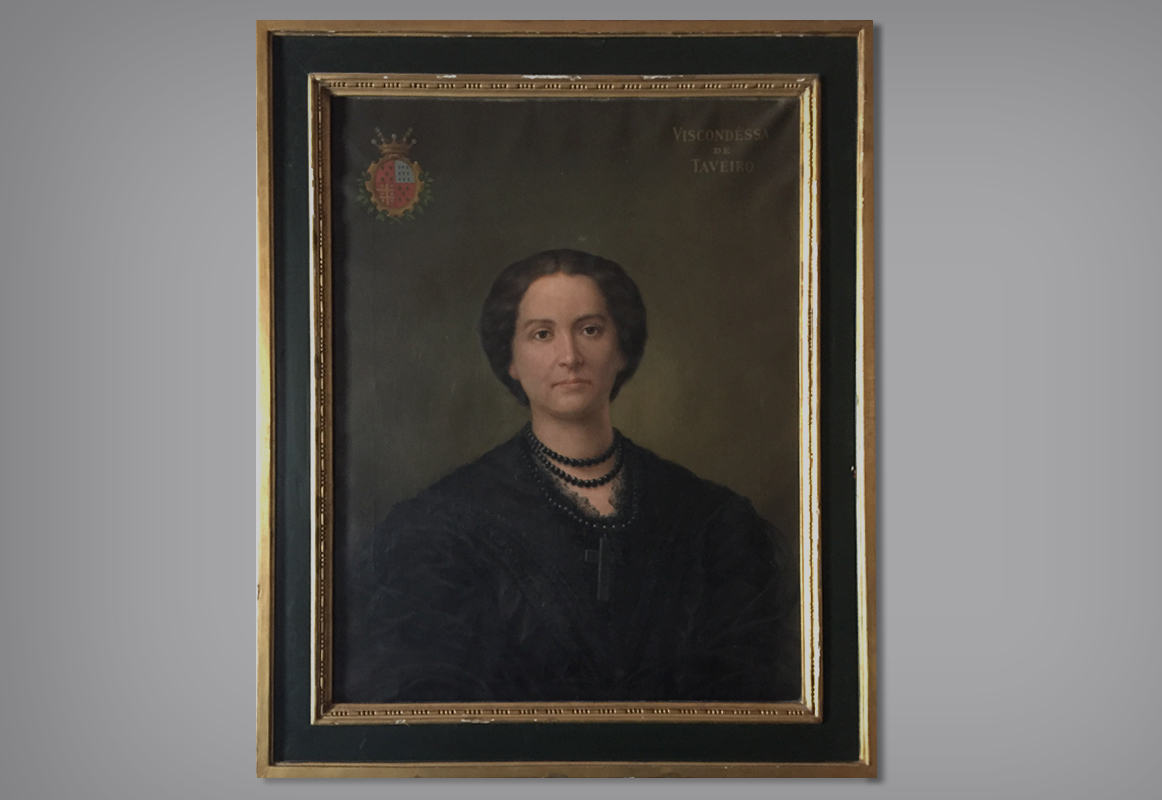
1º Viscountess of Taveiro
D. Maria Rosa de Figueiredo da Cunha D’Eça Abreu e Melo Pereira de Lacerda e Lemos
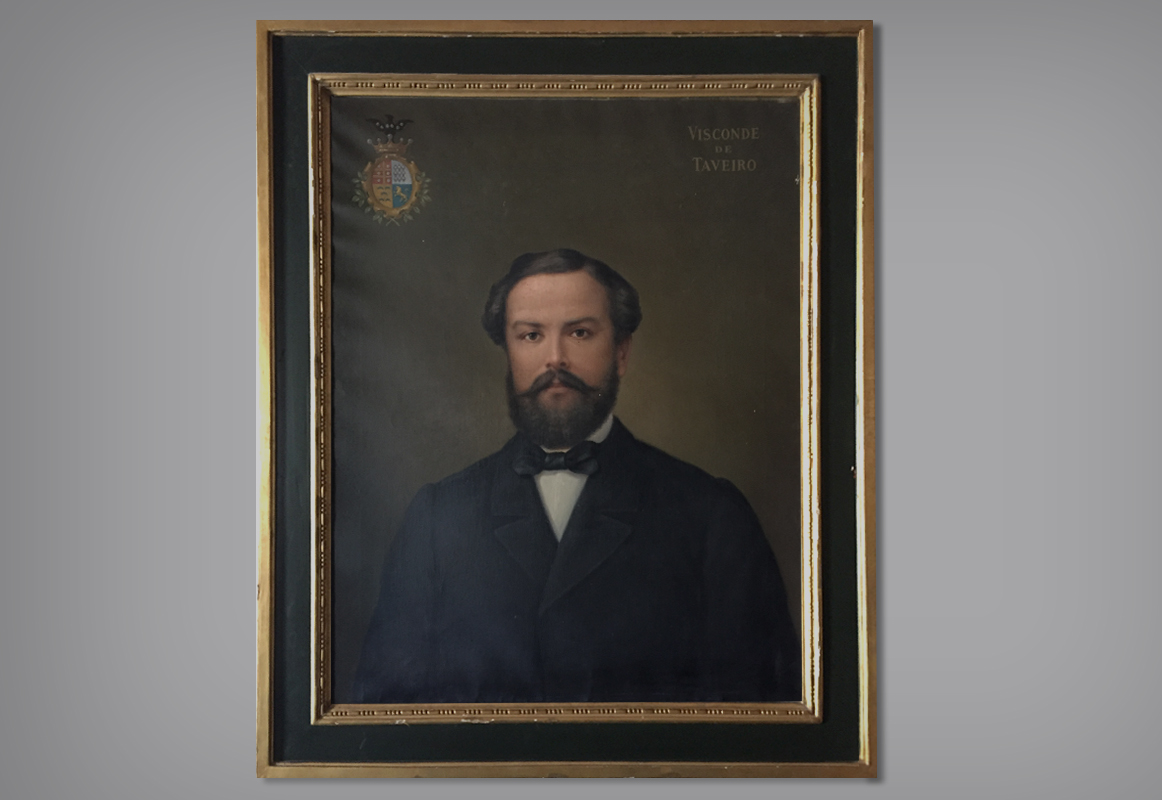
1º Viscount of Taveiro
José de Melo Pais do Amaral de Sousa Pereira de Vasconcelos e Meneses
Counts of Santar (1904)
Title created by king Carlos, by decree of January 23rd, 1904.
Jose Pedro Paulo de Melo de Figueiredo Pais do Amaral da Cunha Eça Abreu e Souza de Meneses Pereira de Lacerda Lemos e Vasconcellos (1853-1914) was a nobleman of the Royal House and lord of the House of Santar and other morgados. In 1878, king Luís acknowledged, in verification of a second life, the title of Viscount of Taveiro. Subsequently, in 1904, king Carlos made him a Grandee, as Count of Santar.
His son Pedro Paulo de Melo Figueiredo Pais do Amaral (1876-1941) was the 2nd Count of Santar, by permission of king Manuel II. A very wise man, he was a true art collector and a fan of bullfight. He married D. Amália de Melo, the widow of the eminent Admiral Hermenegildo Augusto de Brito Capelo.
Having no descendants, the title’s representation was passed onto his great-niece D. Maria Teresa de Lancastre de Melo, daughter of the 3rd Viscount of Taveiro.

Countess of Santar
Maria teresa Lancastre de Mello
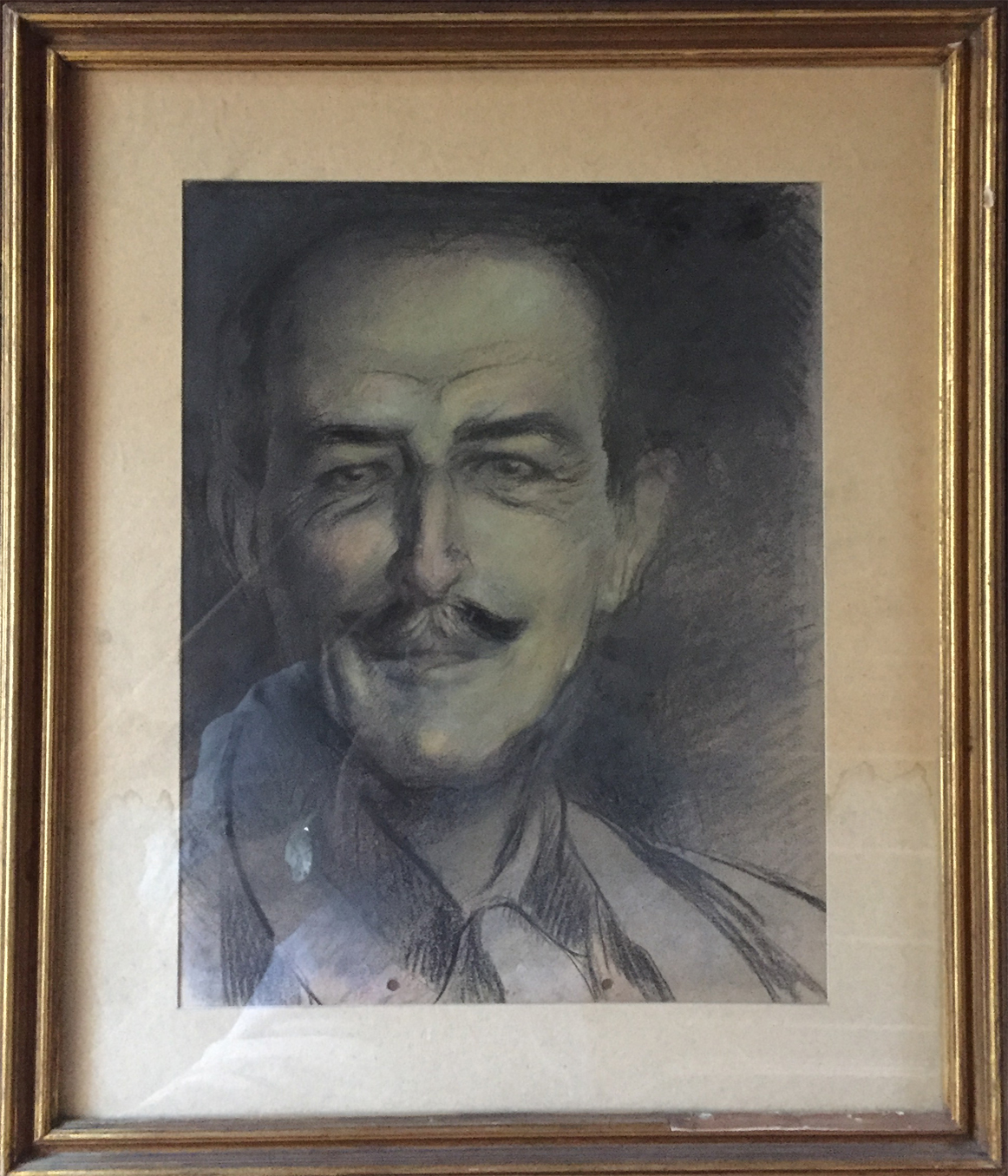
Count of Santar
Pedro Paulo de Melo de Figueiredo Pais do Amaral
Baron and Counts of Magalhães (1870)
The title of Baron, for one life, was created by king Fernando II when he was regent. Later, on May 24th, 1870, a decree by king Luís made him a Grandee, as Count.
António Joaquim Vieira de Magalhães (1822-1903) was the only Baron and Count of Magalhães.
The son of António Vieira de Magalhães (1789-1859), 1st Baron and Viscount of Alpendurada, he was a major dealer in the Lisbon marketplace; he was the director of the Mercado da Praça da Figueira and of the Real Fábrica da Marinha Grande. He entered politics alongside the Count of Peniche, later known as the Marquess of Angeja. After the coup by the Duke of Saldanha, in 1870, he took up the ministry of Finance in the so-called “100-day Ministry”. He was a loyal supporter of the Count of Peniche throughout his many conspiracies. He later joined the political dissidence led by Vaz Preto.
He was made a Peer of the Realm in 1892. He became a Grand Cross of the Orders of Nª Sª da Conceição de Vila Viçosa, of Carlos III of Spain, and of the Holy Sepulchre – in which he was the Portuguese dignitary from September 1902 onwards. From his marriage to D. Antónia Maria de Orta (1838-1905), daughter of the 1st Viscount of Orta, two daughters were born: Maria Antónia later married the Count of Santa Cruz de los Manueles, Grandee of Spain and Marquess of Lierta, while Margarida became, by her marriage, the Countess of Santar and Viscountess of Taveiro.
He was a man of great taste, collecting art works and becoming well-known in the elegant circles of Lisbon for his soirées. Referring to this, the newspaper Diário Illustrado wrote, on January 25th, 1898: «everything was distinctive yesterday, from the guests to the kind way in which the Counts entertained, as well as their esteemed daughters, the ladies Viscountess of Taveiro and D. Maria Antónia.»
The title of Count of Magalhães lies currently with Pedro Paulo de Melo de Vasconcellos e Souza (1965-), third brother of José Luís Vasconcellos e Souza, 4th Marquess of Santa Iria.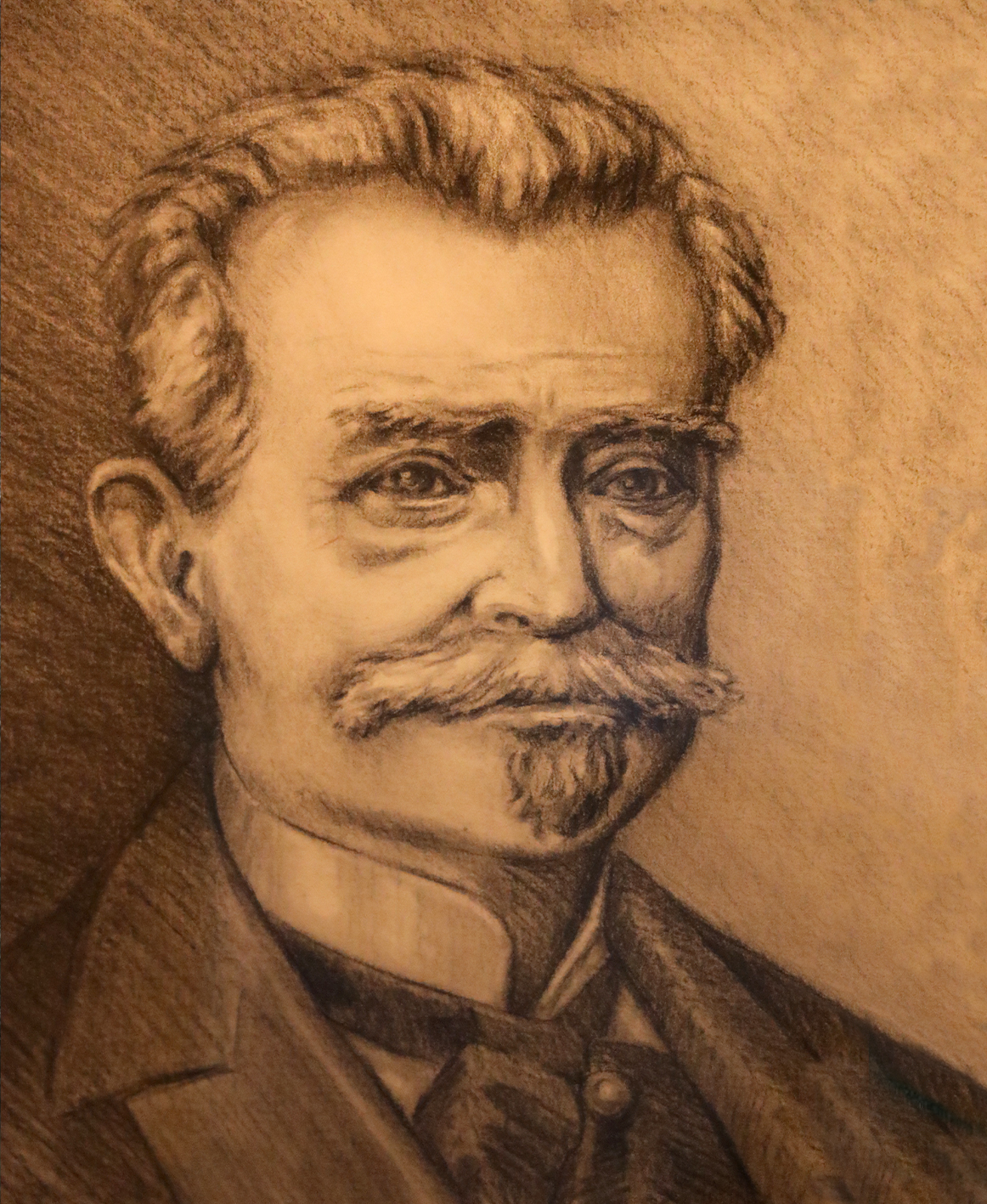
António Luis Vieira de Magalhães
3st Count of Magalhães Melhor >
Counts and Marquesses of Castelo Melhor (1611)
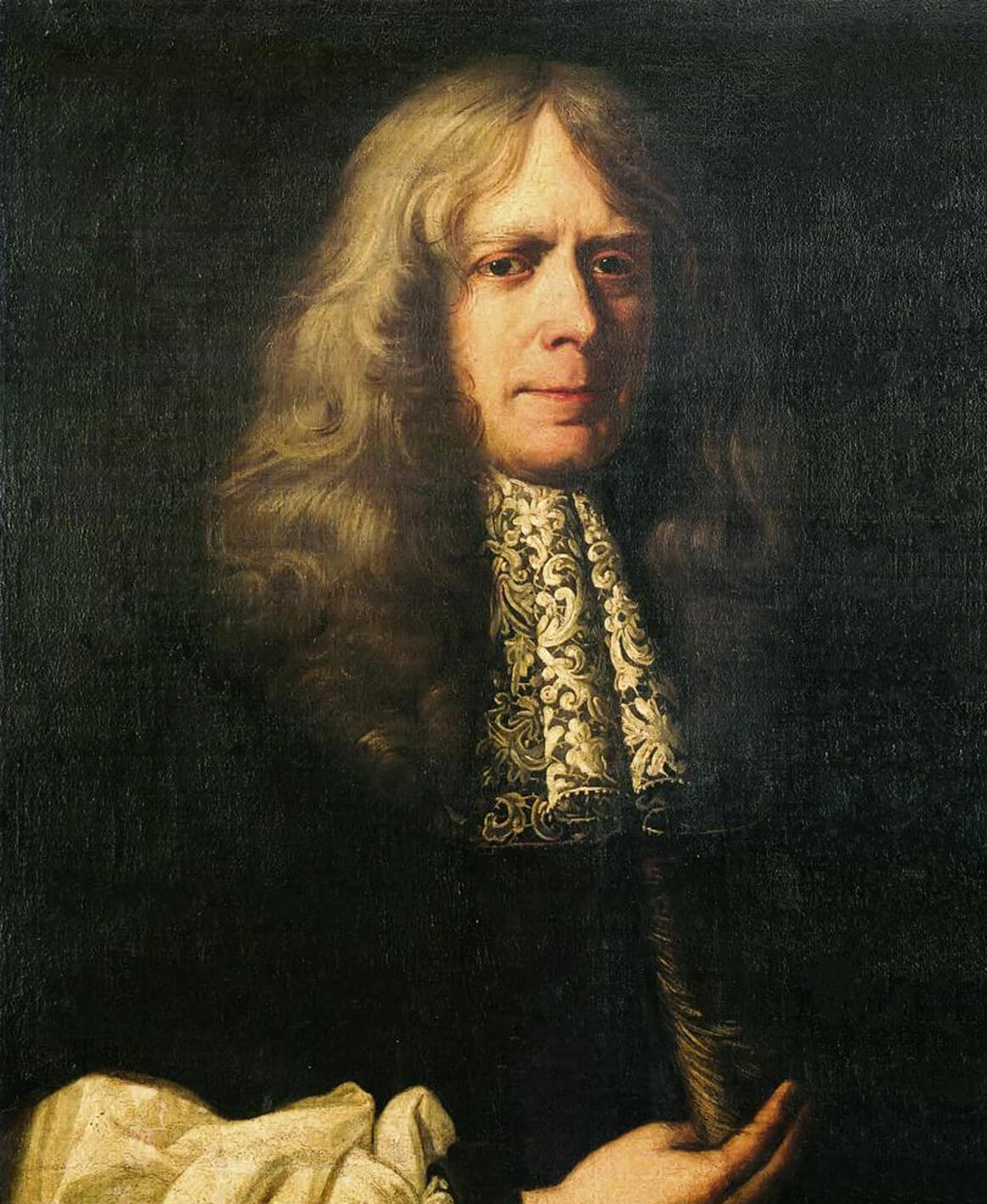
Luís de Vasconcellos e Souza.
3rd Count of Castelo Melhor
Title granted by king Filipe II of Portugal, by charter dated March 21st, 1611.
The first Count of Castelo Melhor was Rui Mendes de Vasconcellos (?-1618). He was the lord of the towns of Almendra and Valhelhas, alcaide-mor of Covilhã and of Penamacor, captain-general of Tanger, and mordomomor to queen Margarida de Áustria, the wife of king Filipe III of Spain.
Lacking male descendants, he asked the king’s permission to name as his successor his relative Francisco de Souza e Vasconcellos, alcaide-mor of Pombal, on condition that the latter would later marry his granddaughter, D. Mariana de Lancastre, daughter of the 3rd Count of Calheta. But the groom died in the meantime, and so the rights and settings of the new marriage were passed on to his brother, João Rodrigues de Vasconcellos e Souza (1593-1658) who later became, for this reason, the 2nd Count of Castelo Melhor. This was no peaceful succession, however, since other relatives also claimed possession of the title. D. João Rodrigues de Vasconcellos was nevertheless confirmed as the rightful holder by a royal decree issued in 1635.
Three years later he sailed to Brazil, where he rendered good service. After the Restoration, while he was still in Brazil, he and other noblemen rebelled against the Castilian powers, attempting to bring from Cartagena de Las Indias to Portugal the galleons that were stationed there. Having been denounced, he was arrested, along with his companions, and tortured to name all the conspirators.
He never spoke, and was finally allowed to appeal to Castile, where he went in order to be heard. Aware of this, king João IV hired Dutch corsairs to attack the ship which carried the prisoner to rescue him, which actually happened.
In return for his loyalty, the 2nd Count of Castelo Melhor received great bounties and was made military governor of Entre o Douro e Minho. He was also Governor of Alentejo and a War Councillor.
In 1649, he was appointed Governor of Brazil. During his almost four years there, he bravely fought against the Dutch. On his return to Portugal, he was once more made Governor of Entre Douro e Minho and died in the exercise of his duties.
His widow, because she had been camareira-mor to Queen D. Maria Francisca of Savoy, was raised to the title of Marquess of Castelo Melhor. Back in 1643, this lady had distinguished herself in the siege of Monção when, in the absence of men to defend the fortress, the women stepped forward to fight. She was the head of the female army thanks to which Monção did not fall into Spanish hands.
On the death of her brother, D. Mariana de Lancastre inherited the morgadios and seignories of the House of Calheta.
The 3rd Count of Castelo Melhor was D. Luís de Vasconcellos e Souza (1636-1720) – the influent minister of King Afonso VI, reposteiro-mor of the Royal House, escrivão da puridade and State Councillor.
Having earned the trust of Afonso VI, he managed to subtract the king from the influence of his mother, the Queen Luísa de Gusmão. This fragile monarch ended up deposing all his power in the hands of his minister.
He was the one responsible for organizing the defence of Alentejo against the powerful army of D. Juan of Austria, which saw a string of victories that put a definitive end to the War of Restoration.
The weak personality of king Afonso VI however, eventually made him step aside. Castelo Melhor exiled himself in London, rendering relevant service to the Queen of England, the Portuguese D. Catarina of Bragança. Thanks to the latter´s intercession, he was able to return to Portugal in 1685. During the reign of king João V, he was once again called into the Council of State.
His grandson, José de Vasconcellos e Souza Caminha da Câmara Faro e Veiga (1706-1769), became the 4th Count and 1st Marquess of Castelo Melhor, a title granted by king José I in 1766.
The 4th Marquess of Castelo Melhor and 8th Cuont of Calheta, João Vasconcellos e Souza Câmara Caminha Faro e Veiga (1841-1878), was held in high esteem by king Luís I. He was made reposteiro-mor but did not accept the bounty of becoming a Peer of the Realm. A lover of bullfights, he had several participations in fundraising events and was one of the founders of the Clube Tauromáquico.
Nowadays, the claimant to the titles of 9th Marquess of Castelo Melhor, 11th Count of Calheta, 6th Count of Castelo Melhor, 4th Viscount of Várzea, 3rd Viscount of Guiães, and 2nd Viscount of Pinheiro is the only posthumous son of the 5th Count of Castelo Melhor, João Brum da Silveira de Vasconcellos e Souza (1920-1958), the historian Bernardo João Gonçalves de Vasconcellos e Souza (1957-).
The rights to this house are also held by the Vasconcellos e Souza branch of the houses of Santa Iria, Sabugal, Óbidos, Palma, Alva, and Santar.
* Magistrate charged with applying justice to the nobility and overseeing the administration of justice in seignorial estates.
** Morgadio. Unalienable and indivisible seignorial estate always passed down, in the same conditions, to the firstborn male descendant. Only through his absence could a female descendant inherit the rights. Morgadios were extinguished in 1863, with the exception of the morgadio of Casa de Bragança, which endured until 1863.
